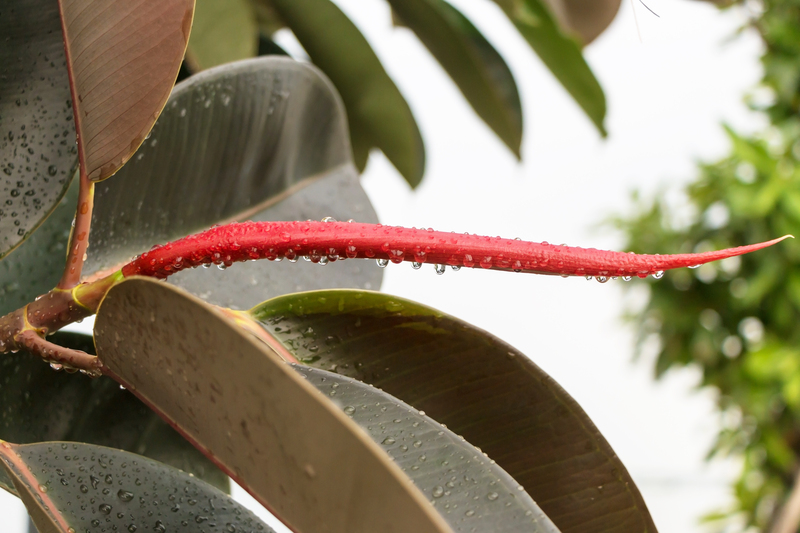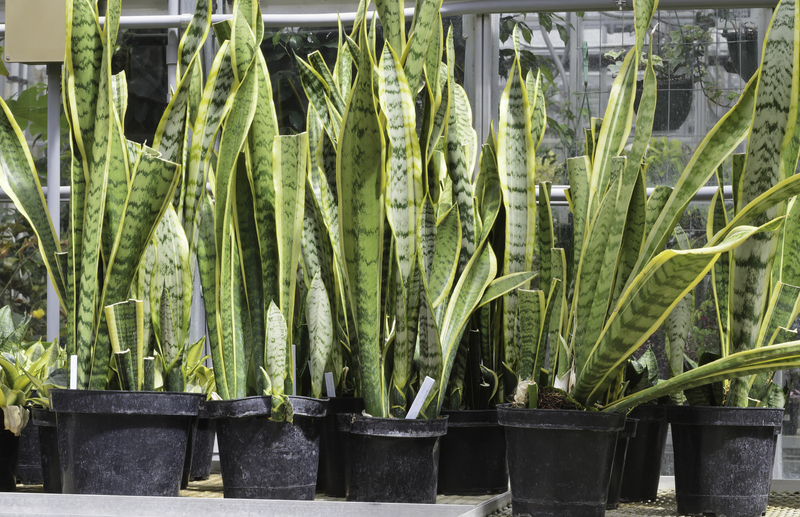Waste Transformed: From Compost Heap to Fertile Fields
Posted on 15/09/2025
Waste Transformed: From Compost Heap to Fertile Fields
In our ever-growing world, the generation and disposal of waste pose significant challenges and opportunities. One of the most promising solutions is the transformation of organic waste into nutrient-rich compost, which can nurture our fields, gardens, and communities. This process, widely known as composting, not only diverts waste from landfills but also revitalizes soil health, underpinning the very fabric of sustainable agriculture. In this comprehensive article, we will explore how waste is transformed into compost, the science behind the process, its ecological and economic benefits, and practical steps to turn your own scraps into black gold for the soil.

The Problem with Waste: A Growing Global Concern
Modern society produces staggering amounts of waste. According to the World Bank, the world generates over 2 billion tons of municipal solid waste annually, with at least 33% not managed in an environmentally safe manner. Within this, a significant portion--often more than 50%--is comprised of organic materials such as food scraps, yard trimmings, and paper products.
- Environmental Impact: When organic waste is sent to landfills, it decomposes anaerobically, releasing methane--a potent greenhouse gas.
- Economic Loss: Valuable nutrients that could restore soil fertility are wasted, and municipalities pay millions in waste management.
- Resource Depletion: Non-renewable fertilizers are used instead, compounding environmental stress.
The question arises: How can we turn this challenge into an opportunity? The answer lies in the composting process.
The Science Behind Composting
What is Composting?
Composting is the natural process where microorganisms, fungi, and invertebrates break down organic matter--such as food scraps, leaves, and grass clippings--into a nutrient-rich, soil-like material known as humus. This process mimics nature's way of recycling, where fallen leaves and plant debris return essential nutrients to the earth.
Types of Composting Methods
- Aerobic Composting: Relies on oxygen-loving bacteria and turning piles to speed decomposition.
- Anaerobic Composting: Occurs without oxygen, typically slower and can produce odors.
- Vermicomposting: Utilizes worms to process food waste rapidly and effectively.
Each method has its advantages, but all share the core principle: transforming waste into a valuable resource for agriculture.
Stages of Transformation: From Compost Heap to Fertile Fields
1. Collection: Gathering Raw Materials
Success begins with segregation. Separate organic waste from plastics, metals, and glass. Common compostables include:
- Fruit and vegetable peels
- Coffee grounds and tea bags
- Eggshells
- Yard trimmings and leaves
- Paper towels and napkins (undyed, uncoated)
Avoid meats, dairy, oils, and diseased plants, which can attract pests or disrupt the compositing process.
2. Decomposition: The Microbial Orchestra
Once organic waste is collected, it is placed in a compost heap or bin. Here the magic begins: a dynamic community of microorganisms--bacteria, fungi, actinomycetes--set to work, breaking down complex compounds into simpler nutrients. This stage is marked by rising heat (often up to 70?C/158?F), which sanitizes the pile and accelerates decomposition.
- Carbon to Nitrogen Ratio: Balance "browns" (carbon-rich, e.g., leaves) and "greens" (nitrogen-rich, e.g., food scraps).
- Oxygen: Turning the pile aerates it, fostering aerobic breakdown and minimizing odors.
- Moisture: Compost should be as damp as a wrung-out sponge for optimal activity.
3. Maturation: The Final Product
After active decomposition (weeks to months), the material enters the curing phase. Temperatures drop, and beneficial microbes stabilize nutrients. The finished product is dark, crumbly, and earthy-smelling--ready to enrich soil and transform barren land into fertile fields.
Ecological & Agricultural Benefits of Compost Application
Restoring Soil Health
- Improved Structure: Compost enhances soil aggregation, making it easier for plant roots to grow.
- Increased Nutrients: Returns vital elements like nitrogen, phosphorus, and potassium.
- Water Retention: Compost-amended soils hold more moisture, reducing irrigation needs.
- Erosion Control: Stable soil resists erosion better than bare earth.
Boosting Crop Yields and Resilience
- Natural Fertility: Compost releases nutrients slowly, promoting steady plant growth.
- Beneficial Microbes: Prevent soil-borne diseases and support healthy root systems.
- Climate Change Mitigation: Adding organic matter increases carbon sequestration in soil, drawing down atmospheric CO2.
Closing the Nutrient Loop: Circular Economy in Action
Using compost in agriculture is more than just recycling; it is the restoration of a critical feedback loop for sustainable food systems. Nutrients return from the dinner table to the farm field, closing the nutrient cycle and reducing dependence on synthetic fertilizers, whose production often relies on fossil fuels.
From Backyard Compost to Large-Scale Operations
Residential Composting
Home composting is a practical and rewarding way to reduce household waste and generate high-quality soil amendments. Whether using a simple pile, bin, or tumbler, residents can cut their garbage output by up to 30%. Many municipalities now offer curbside food scrap pickup or community composting sites, making it even easier.
Community & Industrial Composting
On a larger scale, industrial composting facilities handle vast quantities of organic waste. These operations manage temperature, aeration, and moisture precisely--ensuring rapid, hygienic decomposition. Finished compost is then sold to farmers, landscapers, and gardeners, fueling a virtuous cycle.
- Case Study: San Francisco's city-wide food scraps collection program has diverted hundreds of thousands of tons of waste from landfills, turning it into fertilizer for local farms and vineyards.
- Farmers: Many large farms now integrate on-site composting to process crop residues and animal manures, closing the loop and saving on fertilizer costs.
Overcoming Challenges: Issues & Innovations in Composting
Common Barriers
- Contamination: Non-compostables mixed with organic waste (plastics, metals) reduce compost quality.
- Odor & Pests: Poorly managed piles may attract unwanted animals or emit foul smells.
- Lack of Awareness: Many people are unfamiliar with composting best practices or its benefits.
Technological Advancements
New technologies are making waste-to-compost transformation easier and more accessible:
- Smart bins that monitor temperature and moisture, optimizing decomposition automatically.
- Compostable packaging that breaks down alongside food waste.
- Biogas digester systems that recover energy before creating compost.
Simple Steps: How You Can Transform Your Waste
1. Start Separating Organics
Place a designated bin in your kitchen for food scraps, and educate family or coworkers about what belongs in the compost.
2. Choose Your Method
- Pile: For those with space, simply heap materials in a corner of the yard.
- Bin: A closed bin keeps things tidy and deters animals.
- Vermicomposting: Use a worm bin indoors for rapid processing and high-quality castings.
3. Maintain Balance
- Aim for a 3:1 ratio of "browns" (dry leaves, sawdust) to "greens" (food scraps, fresh grass).
- Turn the compost pile every few weeks to aerate.
- Add water to keep it moist but not soggy.
4. Harvest & Apply
In several months, your compost will be ready--dark, crumbly, earthy. Spread it on gardens, lawns, or farm fields to nourish the soil and support robust plant growth.
Future Trends: Waste-to-Fertilizer Innovations
As cities and farms strive for sustainability, newer methods are being integrated:
- Biochar Production: Pyrolysis of organic waste to create biochar, which stores carbon and boosts soil fertility.
- In-vessel Composting: Enclosed systems ideal for urban settings, offering odor control and speed.
- Agroecology: Marrying compost use with cover crops, crop rotation, and reduced tillage for resilient farms.
Moreover, policies incentivizing composting, coupled with advances in waste collection and public education, are closing the gap between theory and practice.

The Ripple Effect: Economic, Social & Environmental Paybacks
- Local Jobs: Composting operations create green jobs in collection, processing, and distribution.
- Community Engagement: Community compost programs foster cooperation, education, and healthy urban gardens.
- Resource Efficiency: Treating organic waste as a resource, not a liability, saves municipalities money and reduces landfill needs.
Conclusion: Waste Transformation--A Path to a Greener Future
The journey from compost heap to fertile fields is a profound example of nature's genius and human ingenuity working hand in hand. By converting organic waste into life-giving compost, we address critical environmental issues, restore our soils, and sustain our food systems--all while cutting costs and reducing pollution.
Whether on a global scale or in your own backyard, transforming waste into fertilizer moves us toward a circular economy, where nothing is wasted and everything has purpose. The next time you scrape your plate or rake the yard, remember: you hold the building blocks of tomorrow's abundant harvests.
Key Takeaways:
- Composting diverts organic waste from landfills, reducing methane emissions and climate impact.
- Transforming waste into compost restores soil health, improves crop yields, and closes the nutrient loop in agriculture.
- Individuals and communities can make a difference with simple, scalable composting practices.
- New technologies and policies are fueling the growth of sustainable waste-to-fertilizer solutions worldwide.
Embrace the transformation: Let waste feed the earth, and watch the barren become bountiful.



